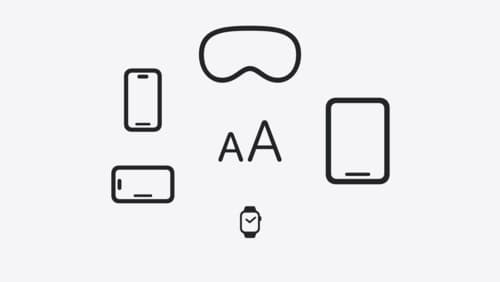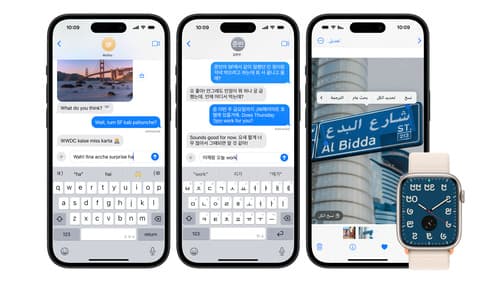Uilabel not match size in SwiftUI
Asked on 2024-09-25
1 search
To address the issue of a UILabel not matching size in SwiftUI, you can leverage the concepts discussed in the "Get started with Dynamic Type" session from WWDC 2024. Here are some key points to consider:
-
Dynamic Type: Ensure that your app supports dynamic type by using system-provided text styles. This allows the text to automatically adjust to different sizes selected by the user, maintaining the visual hierarchy of your content. In SwiftUI, you can use the
fontmodifier to apply these styles. -
Layout Adjustments: Adapt the layout of your content to accommodate larger text sizes. For example, you can switch between horizontal and vertical stacks based on the text size to provide more space for the text. This is particularly useful for accessibility sizes.
-
Images and Icons: When working with images and icons alongside text, ensure they scale appropriately. You can use the
scaledMetricAPI to resize images based on the selected text size. This helps maintain a balance between the text and decorative elements. -
Text Wrapping: In cases where images do not scale, ensure that text wraps under the unscaled image to utilize the available space effectively. This prevents truncation and clipping of text.
For more detailed guidance, you can refer to the session Get started with Dynamic Type (06:00) which covers dynamic layouts and how to handle text and images in SwiftUI.

Get started with Dynamic Type
Dynamic Type lets people choose their preferred text size across the system and all of their apps. To help you get started supporting Dynamic Type, we’ll cover the fundamentals: How it works, how to find issues with scaling text in your app, and how to take practical steps using SwiftUI and UIKit to create a great Dynamic Type experience. We’ll also show how you can best use the Large Content Viewer to make navigation controls accessible to everyone.

Build multilingual-ready apps
Ensure your app works properly and effectively for multilingual users. Learn best practices for text input, display, search, and formatting. Get details on typing in multiple languages without switching between keyboards. And find out how the latest advances in the String Catalog can make localization even easier.
